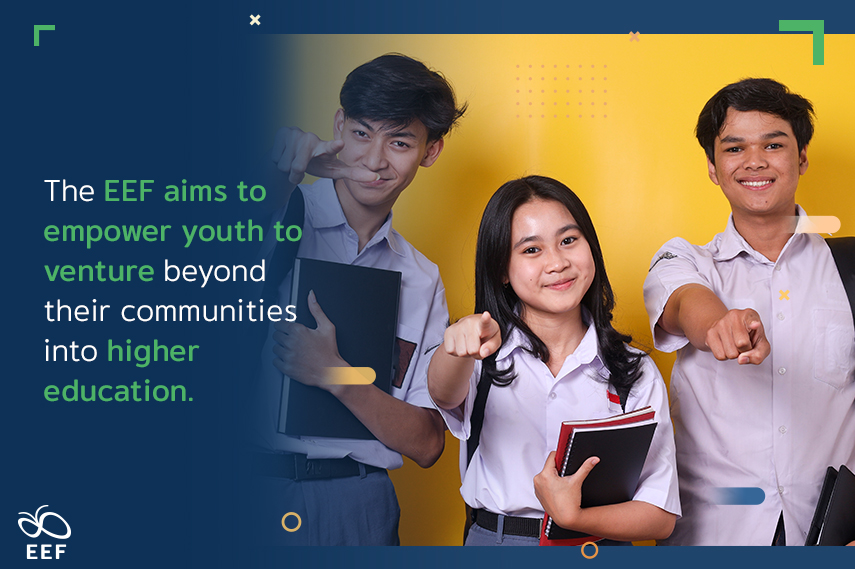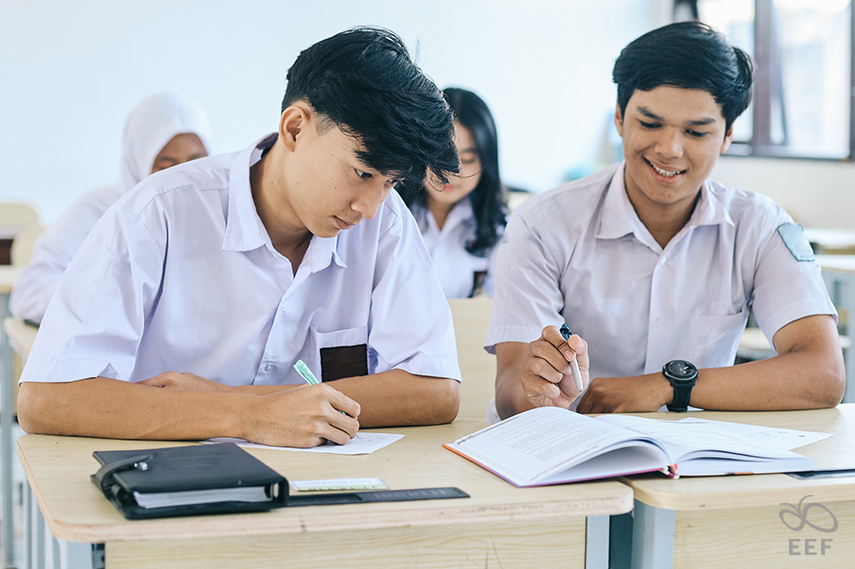
Addressing educational inequality between privileged and underprivileged children is a significant challenge, as highlighted by the stark contrast in educational opportunities. In 2021, the top 10% had a 64% chance of pursuing a bachelor’s degree, contrasting with the bottom 10% at 11%. Over 90% of children not attending school is considered a major missed opportunity, revealing flaws in the human development system. To create an inclusive educational environment, universities should extend their focus beyond the 18-22 age range. The key question is: how to transform the education system for seamless progression from basic to advanced levels, shifting it towards an “uninterrupted” learning model?
A system-wide approach to establishing a seamless and equitable educational journey is crucial for national progress, emphasizing collaboration between basic and higher education —without a bridge between the two, many risks fall through the cracks upon entering university. Recognizing this, an approach devoid of disconnections has been proposed by the Ministry of Higher Education, Science, Research, and Innovation (MHESI), collaborating with various entities to ensure that economically disadvantaged students, who lack learning resources at the basic education level, are supported through their university journey.
In 2021, the Ministry entered into a Memorandum of Understanding (MOU) with Equitable Education Fund (EEF) Thailand, the Council of University Presidents of Thailand (CUPT), and Rajabhat Universities and Rajamangala Universities. The MOU outlined the necessity of establishing an Education Security System aimed at interconnecting databases to provide financially disadvantaged individuals access to educational opportunities. This initiative extends to research, innovation, and knowledge creation to support policies promoting educational equality.

Despite national development efforts, accessing education remains a significant challenge, extending beyond socio-economic status to include issues of information access and personal obstacles, which hinder normal system entry. Basic education for all citizens correlates with improved economic indicators, yet Thailand’s mandatory 9-year educational system falls short, yielding an average of only 8.7 years of education per labor force member. Free education initiatives are hampered by hidden costs, hindering underprivileged and marginalized individuals. Spearheaded by the Equitable Education Fund (EEF) and Student Loan Fund (SLF), bridging this gap requires a holistic approach beyond mere finances, addressing broader socio-economic barriers.
Currently, the EEF assists economically disadvantaged children, while the SLF along with universities supports students in upper secondary, vocational, and higher education. Collaboration among public agencies may be ongoing, but the educational system, particularly in upper secondary education, reveals two weaknesses. First, limited teacher knowledge stifles students’ exposure to career options, perpetuating traditional attitudes towards academic degrees and subsequent career paths over practical skills. Aligning curricula with real-world expectations demands concerted efforts among public agencies, educational institutions, and educators. Second, only 12% of students who have received Equity Funds from the EEF since Grade 9 pursue tertiary education due to financial constraints, despite seeking SLF loans. This raises concerns about higher education quality and accessibility, impacting Thailand’s international workforce competitiveness.

Against the backdrop of the COVID-19 pandemic, initiatives focused on area-based development have underscored the indispensable role of tertiary education in national progress. With a vast student population in Thailand, prioritizing investment in human capital is imperative. The confluence of looming public health challenges and a burgeoning aging society necessitates a comprehensive approach to address workforce shortages and societal needs. Embracing innovative education policies that integrate work and learning holds the key to enhancing workforce preparedness and bolstering societal resilience. This transformative vision requires a collaborative platform across diverse agencies, striving to enhance learning access, elevate learning outcomes, and affect systemic change to cultivate a more inclusive and dynamic society — here comes to play the “Educational Security System,” aimed at fostering sustainable growth in response to the imperative of transcending Thailand’s middle-income trap.
The EEF seeks to create a secure pathway for students from school to university, ensuring they transition smoothly between levels of education without falling through the cracks of the educational system. Without this safety net, children may hesitate to bridge the gap between secondary and tertiary education due to uncertainty about their future prospects. The lack of assurance that they will have the means to continue their education or secure sustainable livelihoods poses a significant barrier. This uncertainty influences students’ decisions early on, with many opting out of further education if they lack this assurance.

To address this, the EEF is leveraging interconnected data to identify target groups and create seamless interventions. By instilling confidence in students and their families, the EEF aims to empower them to venture beyond their communities into higher education. This strategic approach involves refining data collection processes to gain deeper insights and potentially expanding data coverage to include other domains like economics and health. Thanks to this, by 2023, approximately 12.46% of Equity Fund scholarship recipients since 2019, selected through the TCAS system, pursued undergraduate degrees. The number of students who successfully qualified and confirmed their rights in the TCAS system in 2023 saw a substantial increase from the previous year, reaching 21,922 individuals. These individuals represent the invaluable potential driving force of the country in the future, given the fact that it has become a fully-fledged aged society. Even a child cannot be afforded to lose to the cracks; no child should be left behind in the educational system.
Establishing networks and platforms to support economically disadvantaged students is paramount. Despite an increase in admissions through the TCAS system, the number of Equity Fund students confirmed remains low at a rate of only 10-12%, indicating insufficient efforts in facilitating entry into higher education; allocation proportions need reconsideration. In-depth interviews revealed concerns about expenses and uncertainties regarding educational security. Particularly, the costs of application and exams pose significant obstacles. Previously, under the admission exam system, students could apply to multiple universities, sit for exams without restrictions, and confirm multiple admissions simultaneously. This led to a disparity, allowing financially better-off students to confirm multiple admissions, exacerbating inequality.

To address this, the TCAS system has been introduced, eliminating the need for multiple exams and preventing universities from admitting students before graduation. This reduces exam sittings and ensures fair confirmation, preventing others from missing out. Additionally, post-graduation exams alleviate extra study burdens. Meanwhile, to mitigate financial barriers, discussion on reducing application costs is underway, especially for Equity Fund students. The ultimate goal is to reduce expenses and ensure equal opportunities.
Furthermore, the increasing trend of students retaking exams after being admitted has been observed. This figure has risen steadily from 12% to 20% in the current year, meaning that 1 in 5 individuals confirming their TCAS rights are already university graduates. This results in a loss of both manpower and training resources, as well as time. To address this, systems have been put in place to develop the country’s workforce, enabling individuals in desired fields to enter these systems. Having an interactive system on a personal level allows students to assess themselves before receiving advice on their chosen fields. It is hoped that every university will collaborate to develop this system together with the TCAS.

Addressing educational inequality in Thailand requires a multifaceted approach, integrating collaboration between basic and higher education, leveraging innovative policies, and ensuring equitable access to educational opportunities. Initiatives like the Educational Security System, driven by collaborative efforts between government bodies and educational institutions, aim to create a seamless pathway for students from school to university. By addressing financial, informational, and systemic barriers, Thailand can foster a more inclusive and dynamic educational environment, empowering all individuals to realize their full potential and contribute to the nation’s sustainable growth and development. This perfectly encapsulates the mission of the Equitable Education Fund (EEF) Thailand, which is to reduce education inequality through research, collaboration, and support for children, youth, and adults in need. It ensures that they have the confidence and support needed to pursue their educational journey, underscoring the importance of providing a safety net for every individual, regardless of their circumstances.

